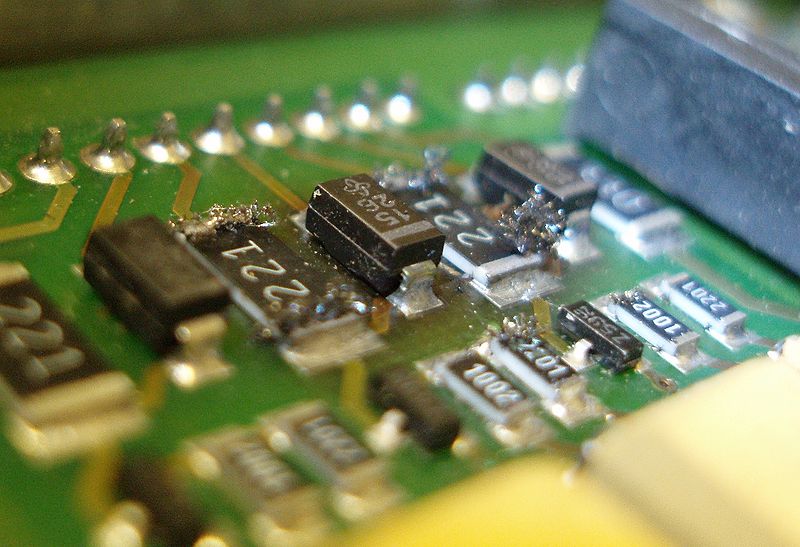
Since electronics went lead-free, the forecast fall in reliability doesn’t seem to have transpired – at least as far as the ordinary consumer is concerned. Lithium-metal has a much higher energy density than Lithium-Ion and if its ‘whisker problem’ can be solved, a new generation of high-capacity batteries will become available. Researchers have recently found that the precise composition of the electrolyte has a direct impact on dendrite growth. The sharp tips can breach separators eventually causing short-circuits resulting in overheating and probably a fire. In this case, though, tree-like structures called dendrites form in the electrolyte of the battery. Lithium-metal batteries have a whisker problem: like Tin, Lithium metal is prone to developing growths on its surface. Today, opinion seems divided on the impact of whiskers in the lead-free age. Lead-free components seemed set to cause a similar disaster, this time with hardware. Nothing happened and the argument still continues as to whether the ‘bug’ was real and fixed by prompt action, or never existed in the first place. Cue prophecies of doom and disaster like those concerning the effect of the ‘Millennium Bug’ on all computer real-time clocks in the year 2000. But it was a temporary fix because Lead was eventually declared a hazardous chemical and banned from use in electronics.


This was the widely adopted solution and remained so for the next 40-odd years. It had been known for some time that by adding a tiny portion of Lead to the Tin used for the plating (and solder), whisker growth could be halted or at least dramatically reduced. Once one had grown long enough to touch the ‘chip’, the device ceased to function. When the device was opened up, whiskers were found sprouting from the inside of the can. A ‘cure’ was to cut the screen wire, but that might have caused increased noise in a sensitive circuit. The short appeared to be between the screen and one of the other three pins. The device failed with an internal short circuit, but with no external sign of what had gone wrong. Many of the early transistor devices of the 1950s had lamentably short lives, particularly those sealed in a tin-plated metal screening can with its own ‘grounding’ lead. Clearly a flow of electric current is not a factor. The last video shows that even an unused component will develop whiskers. Here is a video showing whisker growth around the pins of a DIL packaged chip: It’s not difficult to see the harm caused by these electrically conductive filaments when, after an interval from months to years they eventually form a short circuit. Connector pins are similarly coated for the same reason, although gold is frequently used as a better, but more expensive alternative. It may have remained just an odd but inconsequential effect were it not for the extensive use of Tin plating on electrical circuit boards to prevent copper corrosion. To this day nobody is really sure why they appear on metals like Tin and Lithium, but there does seem to be a connection with mechanical and/or thermal stresses on the surface at the time of manufacture. The whiskers are not a corrosion product, they are pure metal with a sharp point capable of piercing surface coatings aimed at stopping their development. These hairs or whiskers are a fraction the width of a human hair but can grow to many millimetres in length. Image Credit: ESA, Wikipedia Metallic hair growthĪs long ago as 1951 a research paper was written describing a rather weird phenomenon: the tendency for certain smooth metallic surfaces to develop a growth of… hair. What happened to the forecast apocalypse?

The cause was identified and fixed, but then failures returned when the use of lead in electronics was banned under the EU RoHS directive, threatening the reliability of all electronic systems. Many early electronic components had a short lifetime.


 0 kommentar(er)
0 kommentar(er)
